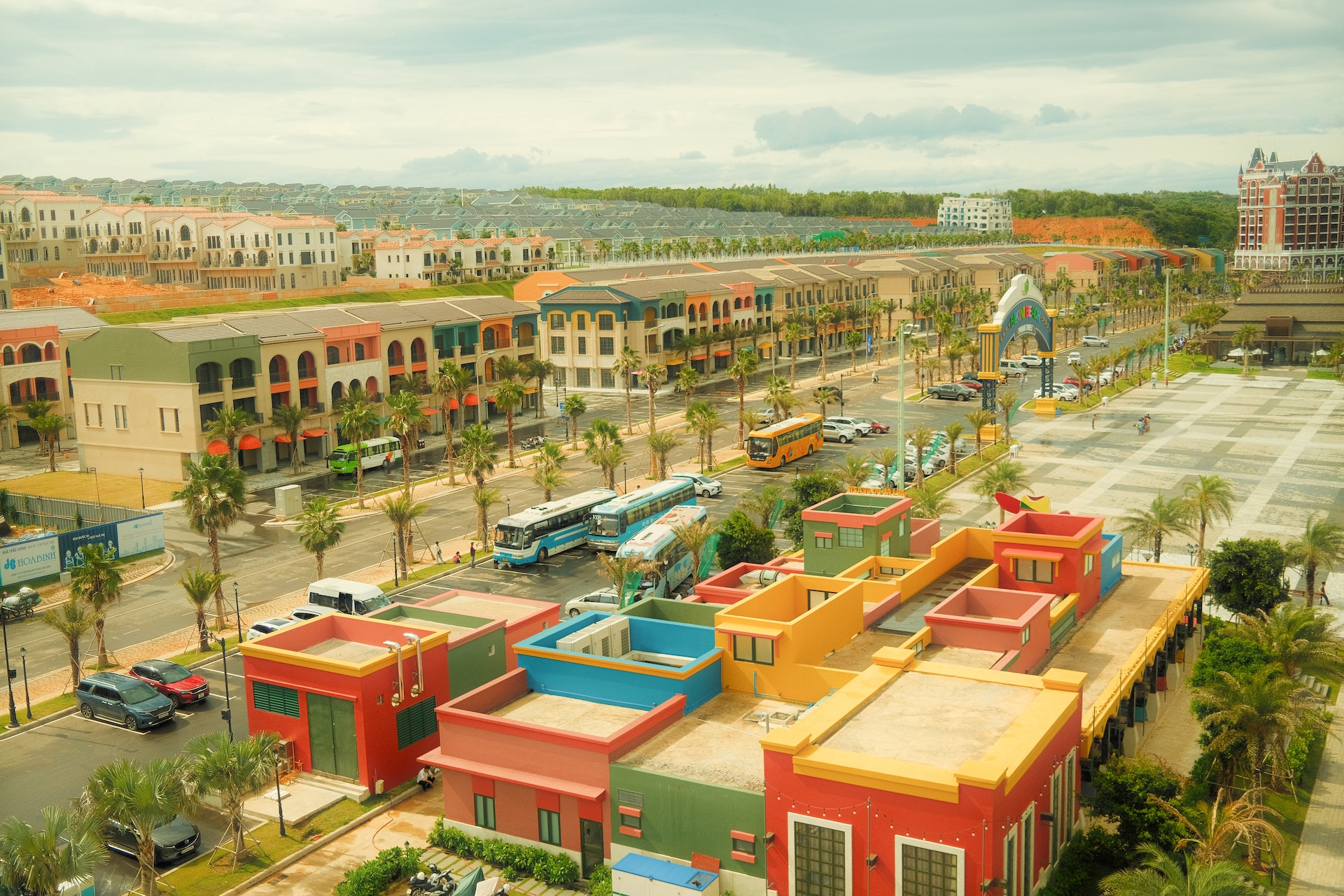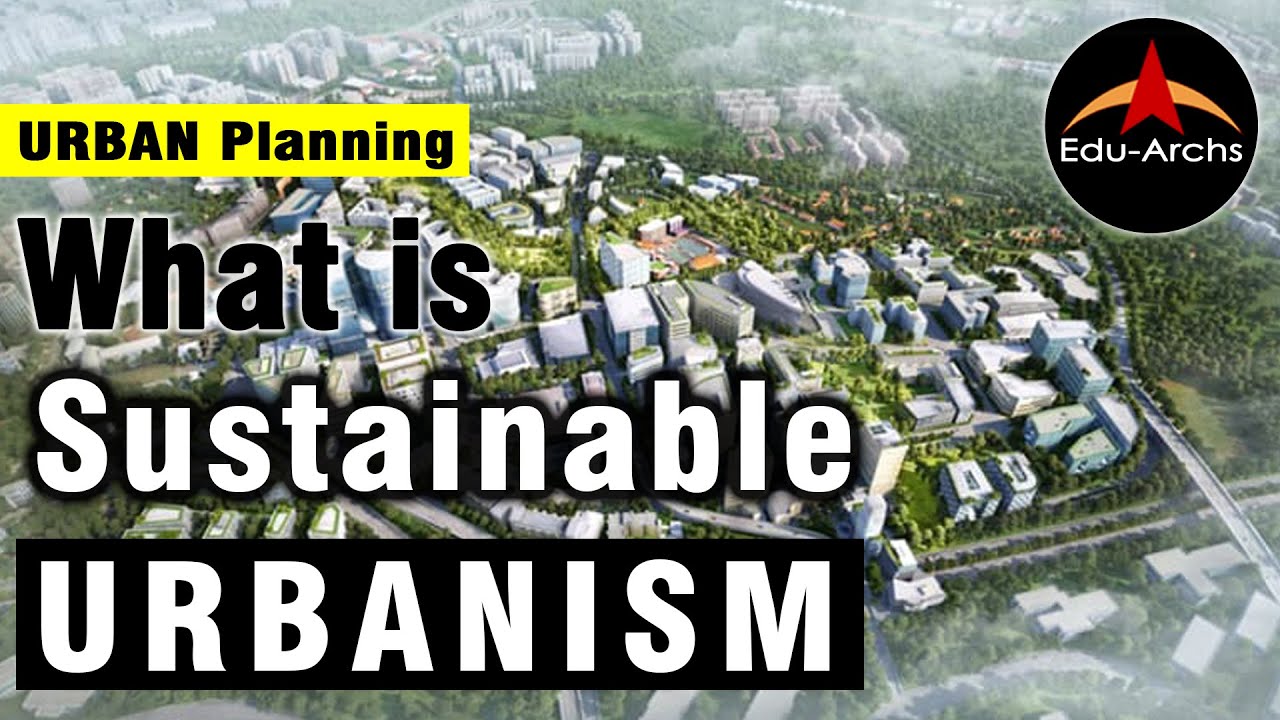Sustainable Urbanism - Creating Livable And Eco-Friendly Cities
Sustainable urbanism is an approach to urban design that emphasizes the need for cities to be built and managed in a way that supports ecological sustainability, social equity, and economic viability.
Author:George EvansApr 09, 2023155K Shares2.2M Views

Sustainable urbanismis an approach to urban design that emphasizes the need for cities to be built and managed in a way that supports ecological sustainability, social equity, and economic viability.
This approach recognizes that cities are complex systems that require a holistic and integrated approach to planning and development in order to be sustainable in the long term.
Sustainable urbanism seeks to balance the needs of the environment, the economy, and society to create cities that are livable, vibrant, and resilient.
It draws on a range of disciplines, including urban planning, architecture, landscape design, and environmental science, to create sustainable urban environments that meet the needs of current and future generations.
What Is Sustainable Urbanism?
Sustainable urbanism is an approach to urban planning and design that emphasizes the creation of sustainable, livable, and equitable urban environments.
It is based on the principles of sustainable development, which seek to balance economic, environmental, and social sustainability, and aims to create urban spaces that meet the needs of current and future generations.
Sustainable urbanism integrates a range of strategies, including green infrastructure, sustainable transportation, energy efficiency, and social equity, to create vibrant, healthy, and resilient urban communities.
The goal of sustainable urbanism is to create cities and towns that are not only environmentally sustainable, but also socially and economically viable.

What is sustainable Urbanism? | Sustainable neigborhood
The Key Principles Of Sustainable Urbanism
Sustainable urbanism is built upon several key principles that guide urban planners and designers in creating more sustainable and resilient cities. These principles include:
Compact And Walkable Urban Form
Sustainable urbanism promotes compact and walkable urban forms that reduce the need for car travel, promote public transit use, and encourage physical activity.
This approach involves designing mixed-use developments that combine residential, commercial, and recreational uses within a short distance of each other, making it easier for people to access the amenities they need without relying on cars.
Green And Sustainable Infrastructure
Sustainable urbanism prioritizes the use of green and sustainable infrastructure, such as green roofs, bioswales, and rain gardens, to manage stormwater runoff, reduce urban heat island effects, and improve air quality.
These types of infrastructure not only benefit the environment but also improve the quality of life for urban residents.
Community Participation And Engagement
Sustainable urbanism values community participation and engagement in the planning and design process.
Engaging with community members and stakeholders can help ensure that urban development projects meet the needs of local residents and promote social equity.
Energy Efficiency And Renewable Energy
Sustainable urbanism promotes energy efficiency and the use of renewable energy sources, such as solar and wind power, to reduce greenhouse gas emissions and combat climate change.
By designing buildings and infrastructure that use less energy and rely on renewable sources of power, cities can significantly reduce their carbon footprint.
The Benefits Of Sustainable Urbanism
Sustainable urbanism offers numerous benefits for cities and their residents, including:
- Reduced carbon footprint and greenhouse gas emissions
- Improved air and water quality
- Reduced traffic congestion and improved mobility
- Enhanced public health and well-being
- Increased access to green spaces and recreational amenities
- Improved social equity and community engagement
Examples Of Sustainable Urbanism In Practice
Sustainable urbanism principles have been applied in cities around the world, with many notable success stories.
For example, Copenhagen, Denmark, is renowned for its pedestrian and bicycle-friendly streets, extensive network of bike lanes, and commitment to reducing carbon emissions.
The city's comprehensive transportation system also includes an extensive network of public transit options, including buses, trains, and ferries.
Another example is Curitiba, Brazil, which is known for its innovative public transportation system.
The city's Bus Rapid Transit (BRT) system has been hailed as a model for sustainable urban transit, with dedicated bus lanes, prepaid tickets, and rapid boarding and alighting.
What Is The Role Of Green Infrastructure In Sustainable Urbanism?
Green infrastructure plays a vital role in sustainable urbanism. It refers to a network of natural and semi-natural features such as parks, green roofs, trees, and water bodies that can provide a range of ecological, economic, and social benefits to urban areas.
Green infrastructure can help mitigate the effects of urbanization, such as air and water pollution, urban heat islands, and loss of biodiversity, while also providing recreational opportunities, enhancing property values, and improving public health.
It can also help reduce energy consumption, greenhouse gas emissions, and the use of non-renewable resources in urban areas.
Overall, incorporating green infrastructure into urban planning and design can promote sustainability, resilience, and livability in cities.
People Also Ask
How Does Sustainable Urbanism Impact Climate Change?
Sustainable urbanism can have a significant impact on climate change by reducing greenhouse gas emissions, improving air and water quality, promoting the use of renewable energy, and reducing waste.
By designing cities and communities that are walkable, bikeable, and connected to public transportation, sustainable urbanism can reduce the use of personal vehicles, which is a major source of greenhouse gas emissions.
What Are Some Examples Of Sustainable Urbanism Projects?
There are many examples of sustainable urbanism projects around the world. Some examples include the development of sustainable communities, such as Vauban in Germany and BedZED in the United Kingdom, which were designed to minimize energy use and promote sustainable living.
Other examples include the creation of green roofs and walls, the use of rain gardens and bioswales to manage stormwater runoff, and the development of sustainable transportation systems, such as bike share programs and electric vehicle charging stations.
How Does Sustainable Urbanism Impact Social Equity?
Sustainable urbanism can have a positive impact on social equity by promoting access to affordable housing, improving public health outcomes, and creating opportunities for economic development.
By designing communities that are walkable, bikeable, and connected to public transportation, sustainable urbanism can increase access to job opportunities and improve access to services such as healthcare and education.
What Are Some Challenges To Implementing Sustainable Urbanism?
There are several challenges to implementing sustainable urbanism, including resistance to change, lack of political will, and financial constraints.
Many people are resistant to changing their behavior and may be unwilling to give up their personal vehicles or adopt more sustainable living practices.
How Can Technology Be Used To Promote Sustainable Urbanism?
Technology can be used in a variety of ways to promote sustainable urbanism, including the use of smart grid technology to manage energy consumption, the development of energy-efficient buildings, and the use of sensors to monitor air and water quality.
Additionally, technology can be used to promote sustainable transportation, such as through the development of ride-share and car-share programs, and the use of electric vehicles.
Final Words
Sustainable urbanism is a critical approach to urban planning and design that prioritizes sustainability, equity, and community engagement.
By integrating sustainable design principles into urban development, cities can reduce their environmental impact, improve public health, and create more livable and inclusive communities.
As we continue to face global challenges such as climate change and rapid urbanization, sustainable urbanism will be an essential tool for creating the cities of the future.

George Evans
Author
George Anderson, an exceptional architectural designer, envisions and brings to life structures that transcend the realm of imagination. With an unwavering passion for design and an innate eye for detail, George seamlessly blends form and function, creating immersive spaces that inspire awe.
Driven by a deep appreciation for the interplay of space, light, and materials, George's innovative approach redefines the possibilities of architectural design. His visionary compositions leave an indelible mark, evoking a sense of wonder and transforming the built environment.
George Anderson's transformative designs and unwavering dedication continue to shape the architectural landscape, pushing the boundaries of what is possible and inspiring generations to come.
Latest Articles
Popular Articles